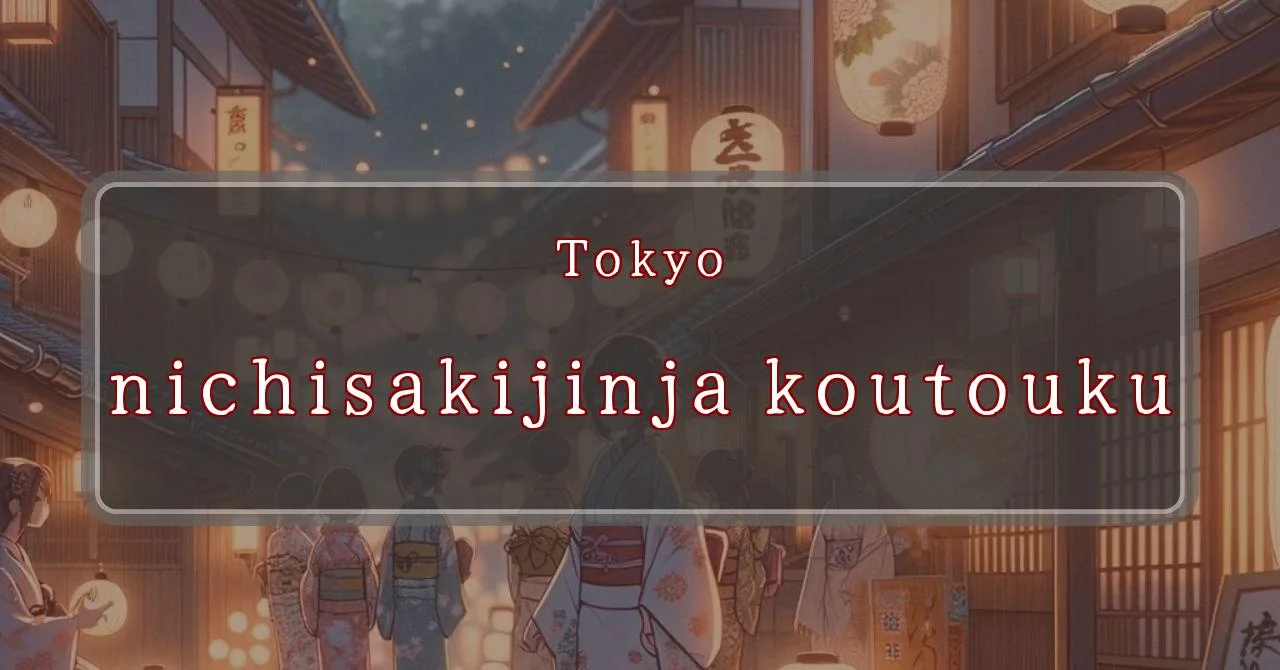Glowing lanterns, joyful spirits
Basic Information
Here’s an overview of the 2024 Hi-no-saki Shrine Festival in Koto Ward, Tokyo.
- Address: 1-22-12 Sarue, Koto-ku, Tokyo
- Phone Number: None
- Access: 2-3 minute walk from Sumiyoshi Station on the Toei Shinjuku Line/Hanzomon Line
- Festival Days: September 25th (Wednesday), 2024
Main Events and Attractions of the Festival
The Hi-no-saki Shrine Festival is a lively and colorful event that attracts many visitors each year. Here are some of the main events and attractions of the festival:
Mikoshi Procession
The mikoshi procession is the highlight of the festival. A mikoshi is a portable shrine that is carried through the streets by a group of people. The Hi-no-saki Shrine mikoshi is particularly large and impressive, and it is carried by a team of over 100 people.
Shishimai Dance
The shishimai dance is a traditional Japanese lion dance. The dance is performed by two people, one wearing a lion head and the other wearing a lion body. The shishimai dance is believed to bring good luck and ward off evil spirits.
Kagura
Kagura is a traditional Japanese dance and music performance. The kagura performed at the Hi-no-saki Shrine Festival is dedicated to the shrine’s deity, Sarutahiko no Mikoto. The dance is believed to bring good luck and prosperity.
Food Stalls
A variety of food stalls are set up at the festival, selling a wide range of delicious Japanese food. Some of the most popular items include takoyaki, yakisoba, and cotton candy.
Games and Activities
There are also a number of games and activities for children at the festival. These include goldfish scooping, ring toss, and face painting.
Blessings and Deities
The Hi-no-saki Shrine is dedicated to two deities: Sarutahiko no Mikoto and Morihichi Tenno.
- Sarutahiko no Mikoto: Sarutahiko no Mikoto isno: Morihichi Tenno is a god of war and victory. He is also known as the god of business and prosperity.
Visitors to the Hi-no-saki Shrine often pray for success in business, safe travel, and good luck in general.
Origin and History
The Hi-no-saki Shrine was founded in the Tokugawa era (1603-1868). It is said that the shrine was built on the site of a former Inari shrine. The shrine was originally dedicated to Sarutahiko no Mikoto, but Morihichi Tenno was added as a deity in the Meiji era (1868-1912).
The Hi-no-saki Shrine has a long history of serving the local community. It is a popular place for people to pray for good luck and protection.
Tips and Notes for Visitors
Here are some tips and notes for visitors to the Hi-no-saki Shrine:
- The shrine is open every day from 9:00 AM to 5:00 PM.
- Admission to the shrine is free.
- There is a small parking lot available for visitors.
- The shrine is located in a residential area, so please be respectful of the neighbors.
- Photography is permitted within the shrine grounds.
Parking Information
There is a small parking lot available for visitors to the Hi-no-saki Shrine. The parking lot is located behind the shrine.
Please note that the parking lot is small and can fill up quickly, especially during popular festival days.
If you are unable to find a parking space at the shrine, there are several public parking lots located nearby.
Popular Stalls and Food Carts in Recent Years
| Type of Stall | Description |
|---|---|
| Takoyaki | A staple at Japanese festivals. Characterized by a crispy outside and a creamy inside. |
| Jaga Butter | A simple yet popular snack of hot potatoes lavishly topped with melted butter. |
| Baby Castella | Small castella cakes, sweet and fluffy treats enjoyed by children and adults alike. |
| Grilled Ayu with Salt | Fresh ayu fish grilled whole with salt, a savory taste of Japanese summer. |
| Shaapin | A unique gourmet item influenced by foreign cuisine, with a chewy skin wrapping the filling. |
| Okonomiyaki | A Japanese grilled dish where you often choose your own ingredients for a personalized flavor. |
| Cotton Candy | A fluffy, sweet snack that’s extremely popular with children. |
| Chocolate Banana | A banana coated in chocolate, a fun and visually appealing dessert. |
| Kushiyaki | Various types of ingredients skewered and grilled, an easy-to-enjoy snack. |
| Yakisoba | Fried noodles mixed with a special sauce, a fast food favorite in Japan. |



